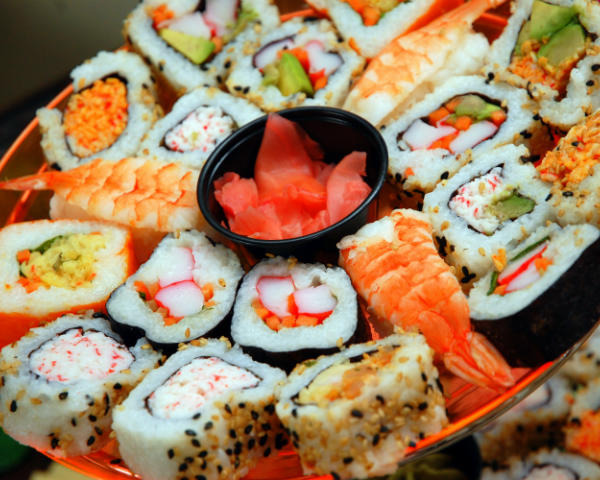Have We Ruined Sushi For Future Generations?
Do you enjoy a good rainbow roll every now and then? So do most Americans. But sushi's surge in popularity over the past few decades may very well lead to the Japanese raw fish delicacy's demise. Over-farming of the world's oceans, particularly of popular sushi varieties like Bluefin tuna, have left wholesale fish purveyors and sushi restaurants scraping the barrel when it comes to resources, according to Next Shark.
Bluefin tuna, arguably the most popular fish variety used in sushi, has been driven to the brink of extinction, and its numbers have dropped 96 percent this year alone in the Pacific Ocean. The endangered fish populations cannot keep up with seafood and sushi appetites, so in reality, much of the Bluefin tuna fishing is now done illegally. One illegal fishing operation in Italy was actually caught in March with 38 tons of illegal tuna worth $402,000.
In the long run, says the United Nations, all wild-caught fish are in danger of population dwindling, and eventually extinction. In 2010, Pavan Sukhdev, head of the United Nation's Environmental Programme's Green Economy Plan, released a grim prediction that "if the various estimates we have received ... come true, then we are in the situation where 40 years down the line we, effectively, are out of fish." And in that same report, we learned that only 25 percent of fish species worldwide had been evaluated as reasonably healthy.
What does this mean? In less than 40 years, we could be looking at fish farms and fish breeding programs as the only way to sustain our insatiable appetite for sushi.
For the latest happenings in the food and drink world, visit our Food News page.
Joanna Fantozzi is an Associate Editor with The Daily Meal. Follow her on Twitter @JoannaFantozzi
